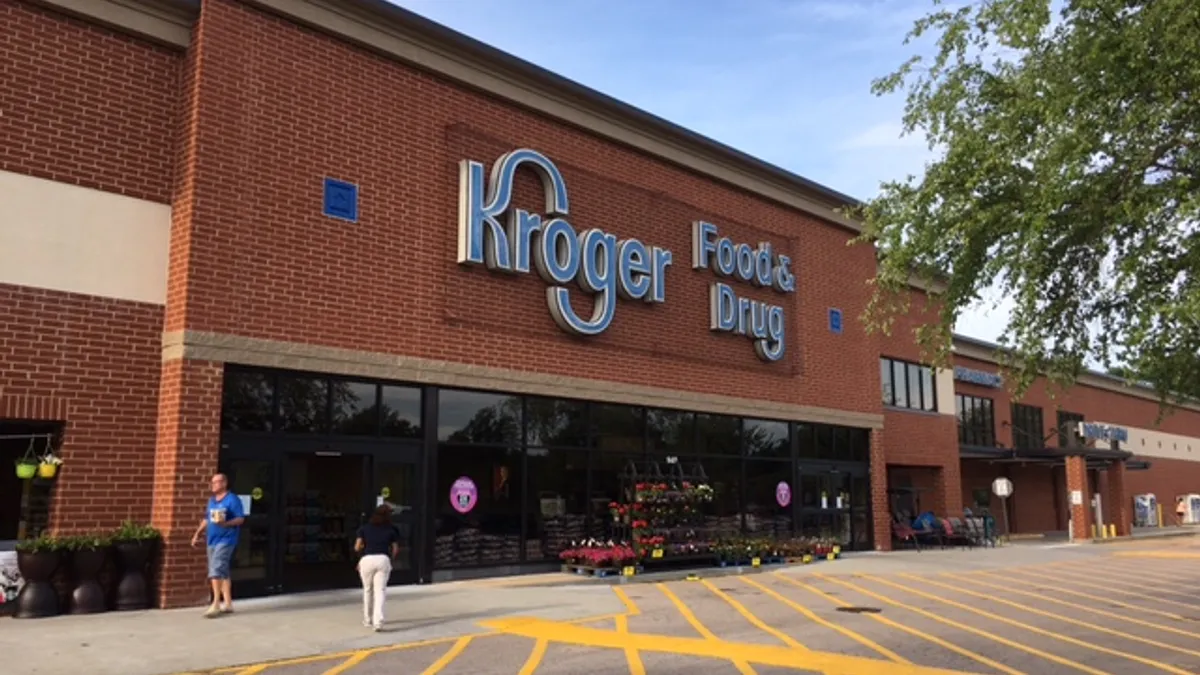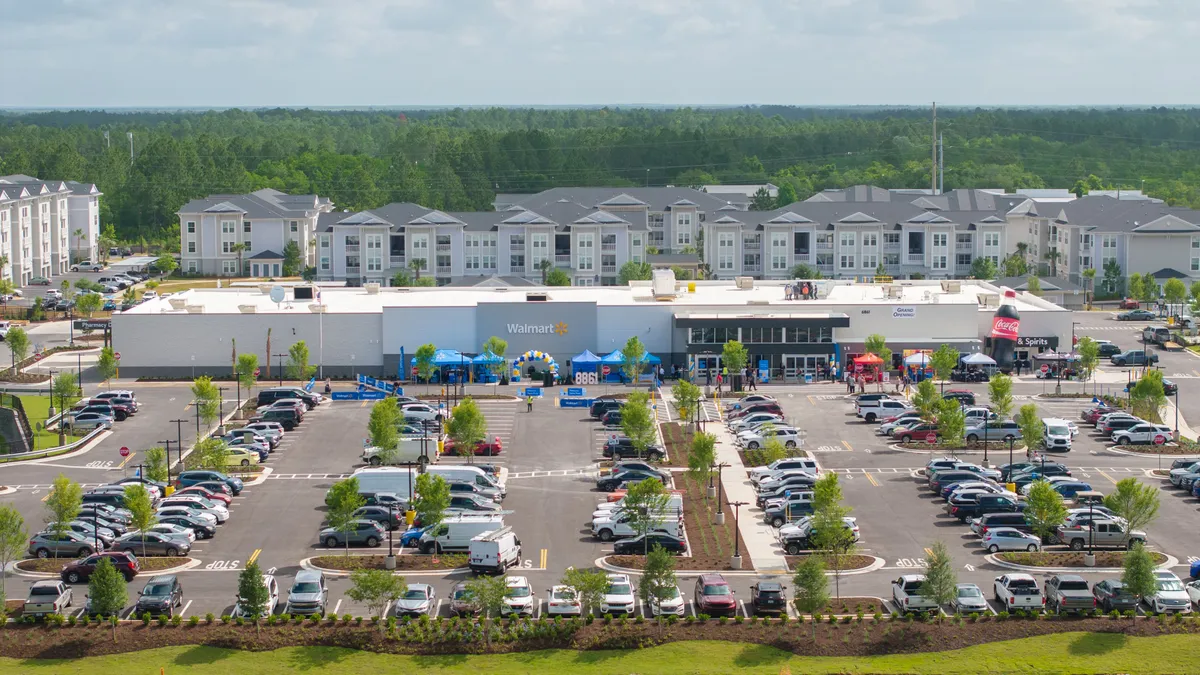Dive Brief:
- Kroger has seen its stock tumble 35% on the year, but the company hopes to see improving financial results when it reports second-quarter earnings this Friday, according to The Wall Street Journal. Competitive pressures, including the rise of discounters Aldi and Lidl and Amazon’s acquisition of Whole Foods, have driven food retail stocks down 20% this year.
- Kroger has met financial headwinds by cutting prices as well as internal costs, slowing store growth and offering voluntary buyouts to employees. Analysts expect easing deflation and promotional activity to raise Kroger’s revenue modestly over last quarter, but say the retailer may need to revise its full-year outlook.
- Long-term, Kroger hopes it can retain customers through promotional pricing and steadily increase its financial performance through private label investments, e-commerce growth and expansion of store technology.
Dive Insight:
Kroger, whose results often serve as a barometer for the larger U.S. grocery industry, has seen its stock battered in recent months as competitive pressures mount — most notably Amazon’s acquisition of Whole Foods and the rapid growth of discounters Aldi and Lidl. In June, the Cincinnati-based retailer reported a same-store sales loss for the second straight quarter following thirteen years of increases in the all-important metric. The company revised its outlook for the year, and may do so again as these pressures continue to weigh on its performance.
Things look tough, but Kroger has weathered challenges like this before — most notably in the late 90s and early 2000s when Walmart’s furious growth stole market share away from traditional retailers. Kroger eventually emerged a stronger retailer, and since then it has excelled at long-term planning and utilizing customer analytics to offer some of the most effective product assortments in the market.
During this latest rough patch, Kroger has focused on cost-cutting as well as strategic investments. It’s slashing prices in order to maintain market share while also expanding its ClickList store-pickup program, enhancing store technology and growing its impressive private label lineup. The company has slowed its store growth and tried to cut costs through staff buyouts and supply chain efficiencies — however, rising labor costs may limit the effectiveness of these measures.
Analysts are expecting another soft quarter for the company, and the consensus seems to be that Kroger will continue to battle headwinds in the near term. But will it return to growth once again the in the long term? Many believe the grocer has made all the right moves of late, and believe top management will steer the company back on track.
“We continue to look favorably upon the company's long-term prospects, but still can't overlook the potential for a still challenging near-term outlook,” Oppenheimer analyst Rupesh Parikh wrote in a note to investors this week.
Others wonder if promotional pricing will become the new norm for grocers in this crowded market. Retailers have reported easing deflation this summer, but competing on price means many haven’t been able to pass as much along to customers as they’d like.
Whole Foods’ development under Amazon will likely play a role in determining Kroger’s future success, as will Walmart’s growth. Continued price cuts and online shopping developments from both of these companies could be crippling to retailers and depress Kroger’s results over the long run, too. However, if Kroger can continue to gain traction with its online platform and offer a better experience coupled with attractive prices, its outlook improves significantly.










